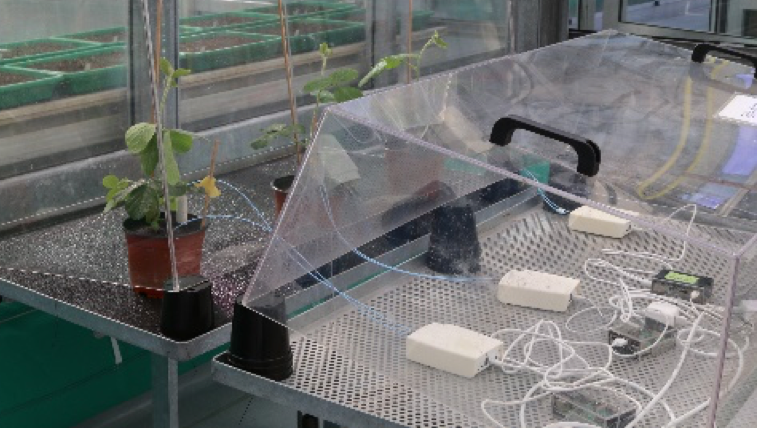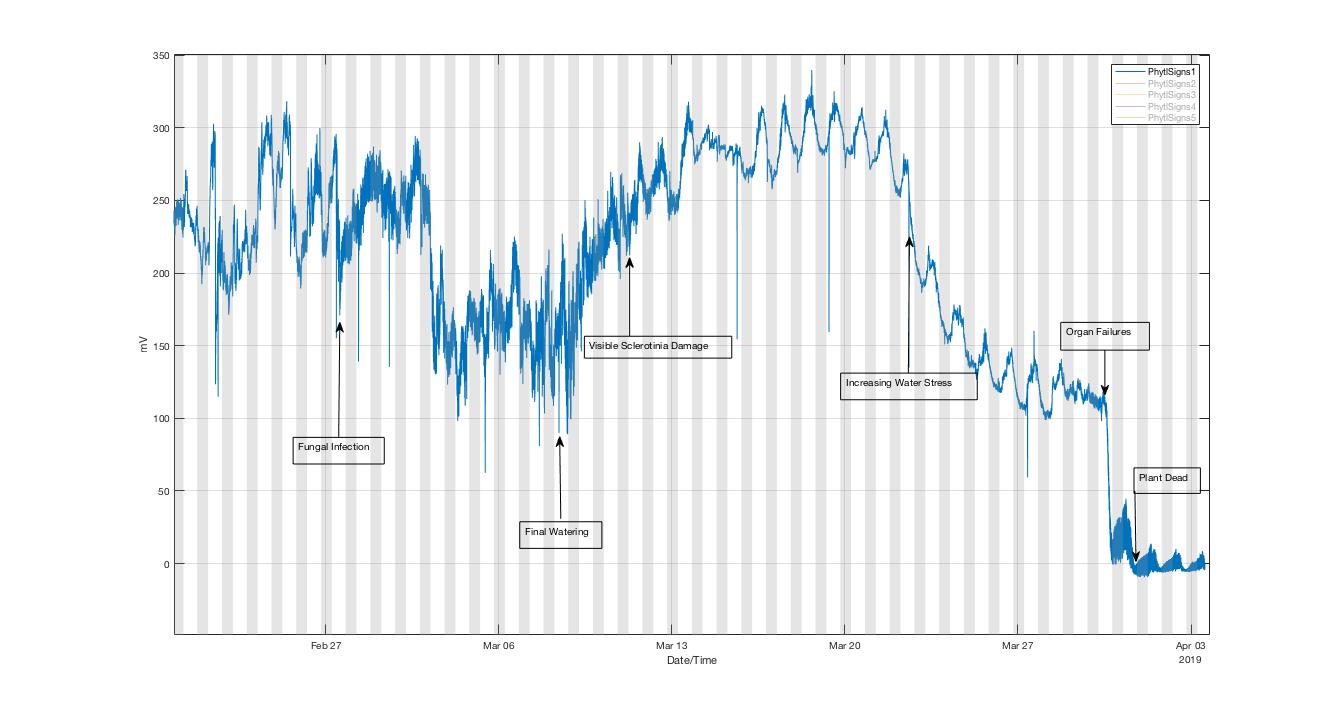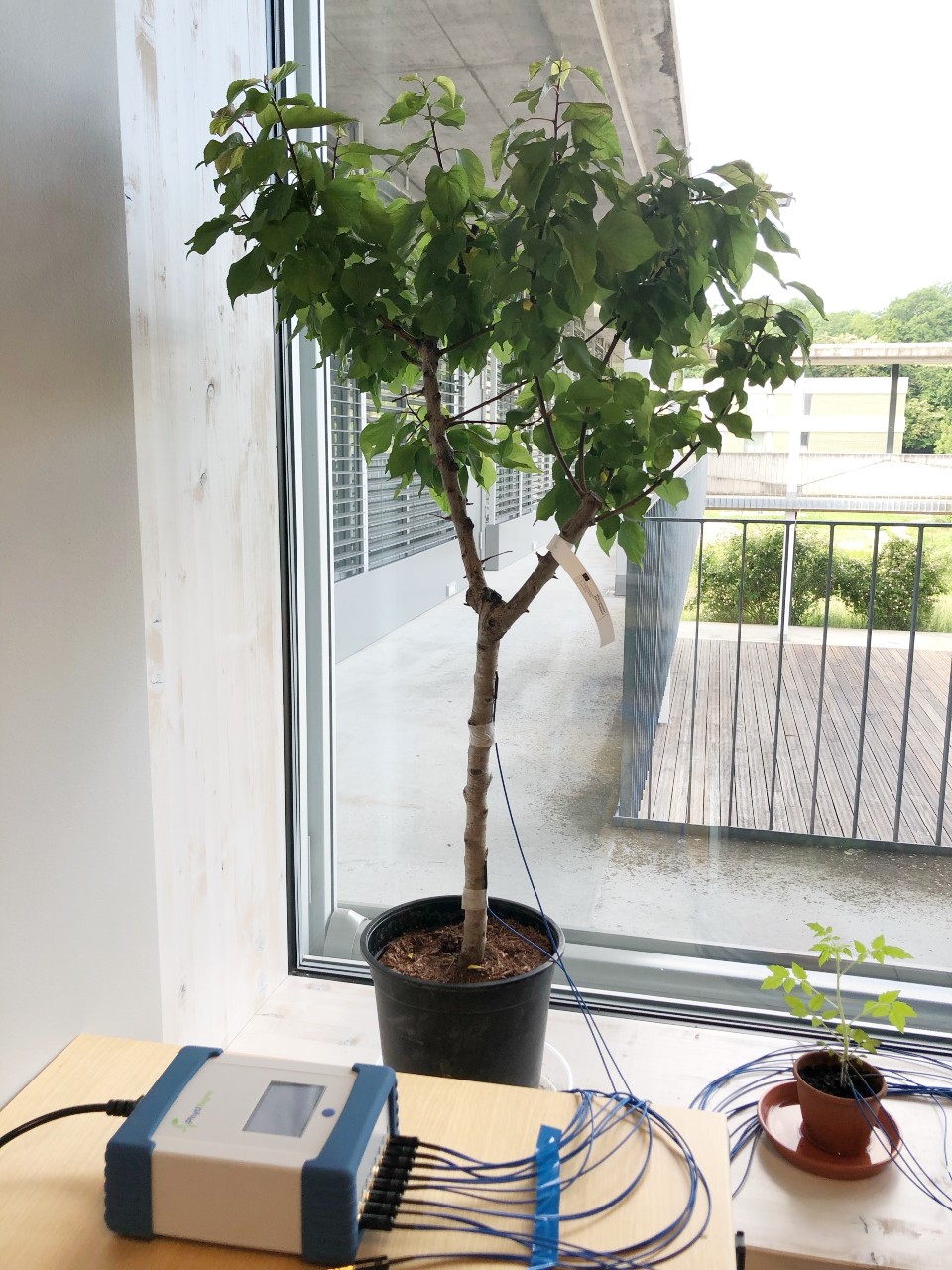
We recently completed some experiments where we monitored soybeans exposed to the fungus, Sclerotinia, and then to severe drought. We were interested in assessing whether the bio-signals associated with these stressors were similar.
We found that we could differentiate between the two types of stress using PhytlSigns signals which is really exciting. We used the model below to describe states of plants affected by these stressors much as a doctor would do for an ill person.

There was a change in the signal characteristics very shortly after infection with the fungus. The plants were Prodromal, without visible symptoms, for 12 days. This provides lots of time for early identification of the stressor and subsequent curative treatment by a grower.
Once visible symptoms of the stress were evident, in this case wilted and curling leaves, we classed the plant in the Acute stage. This stage lasted only 2 days in this experiment. The plants then started to recover from the fungus even though water stress was increasing.
The water stress moved from Prodromal to Acute on Mar 24 with wilted leaves followed by discolouration. This plant appeared to be dead and the soil was very dry on Mar 30 and the signal is varying around 0mV as expected.
We are delighted with the outcomes of this experiment which showed that we will be able to provide early warning of a fungal infections and that we can differentiate between signals associated with different plant stressors.
Looking at the voltage recording from this plant you will see that we continue to pick up some small electrical signals using PhytlSigns even though the plants appear to be dead. We will tell you why in an upcoming blog post.

PS1 Fungal & Water Stress in Soybean




